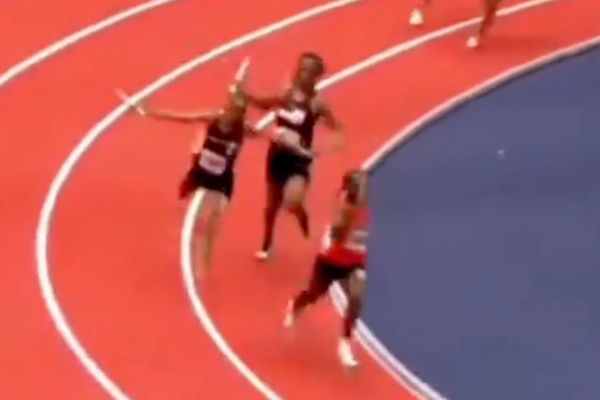A football bounces to different extents on different surfaces, affecting how well footballers can control their plays. Before and during every game, cricketers monitor the pitch and it is evolving. The concept of spin has an even more pronounced effect in table tennis, where players use gripping rubber-coated paddles to strike a light, hollow ball over a hard surface.
In ball games, understanding how the ball and the playing surface interact is crucial for players to control the ball effectively. This is why the interaction between these two things has drawn the attention of both researchers and sportspersons.
Now, in a new study, scientists have reported that only the angle of incidence – i.e. the angle at which the ball approaches the surface – and the friction of the surface affect the spin of a table tennis ball.
Older studies focused on how table-tennis balls bounced off without spinning at first and without considering the ball’s temporary deformation. The new study investigated the bounce of a table-tennis ball on a rigid and tilted surface at a range of incident speeds.
The study was conducted by a team led by Théophile Rémond, a researcher at the National Centre for Scientific Research, and his colleagues at the Lyon Normal School, France. The paper was published in Physical Review E on May 26.
In an experiment, the researchers observed a non-spinning table-tennis ball bouncing off the surface. The setup had a metal rod with a spring mechanism to launch the ball vertically onto a tilted glass plate. They used high-speed cameras to capture the bounce. The researchers then used these videos to analyse the speed, rotation, and angles of the ball before and after the impact.
They found that the ball rolled perfectly after bouncing over a wide range of incident angles and velocities.
They also found that as long as they knew the angle of incidence and the surface friction, they could predict the ball’s speeds of rotation and movement irrespective of the ball’s material or other contact properties.
If the ball was struck in a way that was more perpendicular than parallel to the table – like a tall player might land a high smash – it slid a little bit instead of rolling after it hit the surface. This sliding reduced the amount the ball spun after bouncing off. The highest angle at which there was no sliding was 45º.
The team also found that after it bounced, the ball rotated faster the less parallely it was struck relative to the surface, but only up to 45º again. Any more than that and the rotation speed only dropped further.
In rolling conditions, both the speed of rotation at an angle and the angle at which the ball was ‘reflected’ were different. To fully assess the system’s behaviour, the researchers wrote in the paper, more experimental data beyond the 60-degree angle would be required.
The team also observed that the way the ball changed shape (minutely) didn’t really affect its ball’s rotation rate as long as the angle between the ball’s path and the surface was small.
The researchers wrote that their findings “represent an important step” to understanding table-tennis play and that they “lead us to think that there are only a few ways to modify the ability of the racket” to spin the ball”. Players, take note.
The author is an intern at The Hindu.




![Nevada Math Prof Alleges Discipline for "Voic[ing] Concerns About … the Math Department … Lower[ing] Its Curriculum Standards"](https://images.inkl.com/s3/publisher/cover/212/reason-cover.png?w=600)


